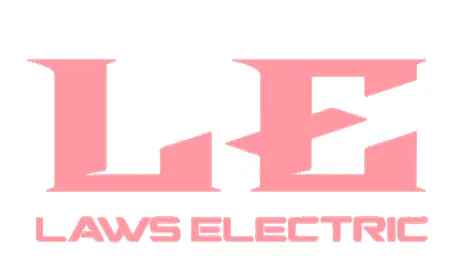Deception Technology Market 2029 Size & Forecast Report | Industry Growth & Trends
According to TechSci Research report, “Global Deception Technology Market – Global Industry Size, Share, Trends, Competition Forecast & Opportunities, 2029”, Global Deception Technology Market was valued at USD 3.21 billion in 2023 and is expected to reach USD 8.16 billion by 2029 with a CAGR of 16.65% during the forecast period. This rapid expansion is fueled by a combination of rising cyber threats, the widespread adoption of cloud computing, the proliferation of Internet of Things (IoT) devices, and heightened regulatory requirements that demand proactive approaches to safeguarding digital infrastructure.
Deception technology represents a paradigm shift in cybersecurity. Unlike traditional security systems that focus primarily on perimeter defense or post-breach mitigation, deception technology is proactive by design. It deploys decoys, traps, and lures across digital ecosystems—networks, endpoints, applications, and data repositories—to mislead attackers. When adversaries engage with these decoys, their activities are detected, recorded, and analyzed in real-time. This not only exposes the attack but also provides valuable intelligence on the attacker’s tools, tactics, and motives.
Request For Sample Copy of Report For More Detailed Market insight: https://www.techsciresearch.com/sample-report.aspx?cid=16224#requestform
Industry Key Highlights
-
Market Growth
-
Valued at USD 3.21 billion in 2023, projected to cross USD 8.16 billion by 2029.
-
CAGR of 16.65% makes it one of the fastest-growing cybersecurity sub-segments globally.
-
-
Sectoral Dominance
-
BFSI (Banking, Financial Services, and Insurance) sector leads the adoption due to high data sensitivity, stringent compliance, and increased cybercrime targeting financial systems.
-
-
Regional Spotlight
-
Asia-Pacific emerges as the fastest-growing region owing to its expanding digital ecosystem, high cybercrime incidents, and significant investments in cybersecurity infrastructure.
-
North America and Europe remain early adopters and strongholds for advanced deployments.
-
-
Cloud-Centric Shift
-
With enterprises embracing multi-cloud and hybrid cloud architectures, cloud-compatible deception solutions are in high demand.
-
-
Ecosystem Evolution
-
Strong integration with Security Information and Event Management (SIEM) tools, Threat Intelligence Platforms (TIPs), and endpoint security solutions.
-
Browse over XX Market data Figures spread through XX Pages and an in-depth TOC on the "Global Deception Technology Market.” @https://www.techsciresearch.com/report/deception-technology-market/16224.html
Emerging Trends in the Deception Technology Market
1. Cloud-Native Deception
The migration to cloud ecosystems is reshaping the cybersecurity paradigm. Traditional perimeter defenses often prove inadequate in dynamic and scalable environments such as cloud-native applications and containers. Deception technology is being tailored to cloud platforms by deploying decoys that mimic cloud workloads, serverless functions, and containerized environments. These decoys are indistinguishable from legitimate assets, making them effective tools against sophisticated attackers targeting cloud infrastructures.
2. AI-Driven Deception
Artificial Intelligence (AI) and Machine Learning (ML) are becoming integral to deception platforms. AI enhances deception by automating decoy placement, analyzing attack behaviors, and adapting in real-time to evolving threats. The result is a system that grows smarter over time, minimizing false positives and reducing manual intervention for security teams.
3. Integration with Threat Hunting Tools
Organizations are increasingly combining deception technology with threat hunting strategies. By generating actionable data about attackers, deception solutions enable security teams to perform more targeted hunts, improving the accuracy of incident response and forensic analysis.
4. IoT and OT Security
The growing attack surface from IoT devices and Operational Technology (OT) systems has created new avenues for cybercriminals. Deception platforms are evolving to include decoys for IoT devices, industrial control systems (ICS), and SCADA networks, offering visibility and early detection in critical infrastructure sectors.
5. Deception for Insider Threats
Insider threats—whether malicious or accidental—pose serious risks. Deception technology can detect unusual patterns from insiders who attempt to access traps, creating an additional layer of protection that traditional monitoring tools may overlook.
Key Market Drivers
1. Rising Cybersecurity Threats
The number, frequency, and sophistication of cyberattacks are at unprecedented levels. From ransomware gangs to state-sponsored actors, adversaries continuously exploit vulnerabilities in networks, cloud, and endpoints. Deception technology enables organizations to stay ahead by detecting threats before damage occurs.
2. Regulatory Pressure
Stringent compliance frameworks such as GDPR, HIPAA, PCI DSS, and CCPA mandate enhanced data protection measures. Deception technology provides evidence of proactive threat detection, helping organizations demonstrate compliance and avoid penalties.
3. Cloud Adoption
As enterprises embrace multi-cloud and hybrid cloud models, their attack surfaces expand. Traditional monitoring tools often miss attacks in these fragmented environments, driving demand for deception solutions that can mimic cloud-native assets.
Major companies operating in the Global Deception Technology Market are:
- SentinelOne, Inc.
- Akamai Technologies, Inc.
- Cybereason Inc.
- Ricksoft, Inc.
- Rapid7, Inc. (Rapid7 LLC)
- Huntress Labs Incorporated
- Fortra LLC
- Acalvio, Inc.
- Microsoft Corporation
Customers can also request 10% free customization in this report.
Future Outlook
The future of deception technology looks promising, with growth driven by the confluence of advanced cyber threats and the global digitization wave. Some key aspects of its outlook include:
-
Mainstream Adoption
Deception will move from being a niche strategy to a mainstream component of enterprise cybersecurity architectures. -
AI-Powered Deception 2.0
The use of AI will create adaptive deception systems capable of automatically deploying decoys based on real-time risk assessment. -
Expansion into SMB Market
While currently favored by large enterprises, lighter and cost-efficient deception solutions will penetrate the small and medium business sector. -
Integration with Zero Trust Architectures
As enterprises embrace Zero Trust models, deception will play a pivotal role by validating user behaviors and detecting lateral movements. -
Growing Role in IoT Security
With billions of IoT devices forecasted, deception will become essential to protect smart cities, connected healthcare, and autonomous vehicles.
Conclusion
The Global Deception Technology Market stands at the intersection of innovation and necessity. With cyberattacks becoming increasingly stealthy and damaging, organizations can no longer rely solely on reactive measures. Deception technology offers a proactive, intelligent, and adaptive defense mechanism that not only detects attacks but also empowers organizations with critical insights into attacker behavior.
Driven by regulatory pressures, cloud adoption, insider threats, and the rising complexity of digital infrastructures, deception solutions are transitioning from experimental tools to essential components of cybersecurity strategies. The market’s trajectory—projected to reach USD 8.16 billion by 2029—demonstrates both its current relevance and future indispensability.
As enterprises continue to digitize, the deception technology market will thrive, powered by AI integration, industry-specific solutions, and its alignment with Zero Trust security paradigms. For vendors, investors, and adopters alike, the market presents vast opportunities for growth, resilience, and leadership in the fight against cybercrime.
Contact US:
Techsci Research LLC
420 Lexington Avenue, Suite 300,
New York, United States- 10170
Tel: +13322586602
What's Your Reaction?
 Like
0
Like
0
 Dislike
0
Dislike
0
 Love
0
Love
0
 Funny
0
Funny
0
 Angry
0
Angry
0
 Sad
0
Sad
0
 Wow
0
Wow
0



















































